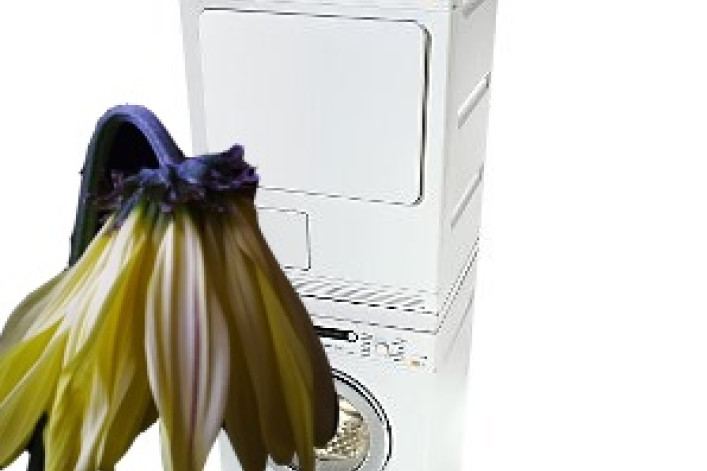Why your high-efficiency washing machine smells like cat pee

If you are lucky enough to have a washing machine in or near your NYC apartment, there’s a good chance it’s the high-efficiency kind.
These models consume a lot less water and detergent than traditional machines, meaning they are environmentally friendly and ideally suited for aging drainpipes. And the fancy European stackables popular among apartment dwellers for their small footprint and cache are all high-efficiency models.
The problem: Particularly during summer, your clothes may emerge spotless yet reeking of the distinctive cat-urine smell of mold.
“High-efficiency washing machines seal more tightly and use less water than traditional top loading machines,” says Mary Zietler, a consumer scientist at Whirlpool’s Institute of Fabric Science.
Un-flushed-out residue from liquid detergent and fabric softener collects over time, particularly in the detergent drawer and the rubber seal around the door. In the humid, airtight interior of a high-efficiency machine, these areas can become a petri dish for mold.
So what can you do about that not-so-fresh feeling?
A spokesperson for Miele, the German manufacturer of high-end appliances, recommends a once-a-month cleaning of the detergent drawer with warm soapy water, plus a hearty scrubbing the rubber seal around the door with a bleach and water solution followed by a soapy water rinse.
Whirlpool sells a foaming tablet product, Affresh, that can be used once a month as a preventative and three times in a row to control a flare up.
During our own summer of mold a few years back, Affresh worked where bleach, vinegar, and a $160 house call failed. We also followed our repairman’s suggestion to switch from liquid detergent to Tide Powder HE, and in the summer especially we try to keep the washing machine door ajar between loads so the machine can dry out—particularly the rubber seal where water collects.
Not everyone is an Affresh fan though.
Carin Froehlich, a self-styled laundry expert in Bucks County, Pennsylvania, says the tablets gave her machine an unpleasant Lysol odor, and within a week the mold aroma was back.
She experimented with other solutions until hitting on a Listerine-based concoction inspired by a recommendation from her Maytag technician (and not endorsed by Miele). The recipe is available in her book, Laundry Wisdom: Instructions for a Greener and Cleaner Life.
(See also this later post: Why your high-efficiency washer smells like cat pee: The official story)
Related posts:























